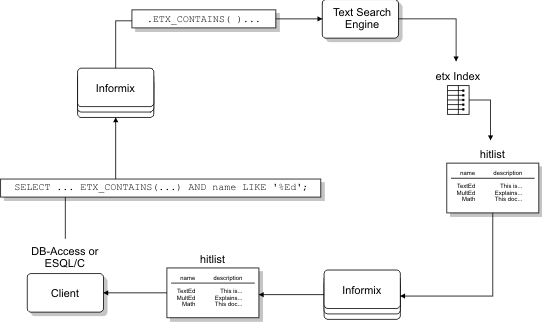How the DataBlade module works
Standard SQL searches that include LIKE or MATCHES clauses use the B-tree access method to scan data. When you perform searches with the etx_contains() operator, alternatively, that part of the query is relayed to the Excalibur text search engine. You can think of the Excalibur text search engine as a specialized part of HCL OneDB™ that is executed when you specify an etx_contains() operation in a SELECT statement.

Even though, for illustrative purposes, the preceding figure shows the Excalibur text search engine as a separate process, it is important to remember that it is dynamically linked to, and considered part of, HCL OneDB.
The following sections describe the components of the and explain how it works in more detail.